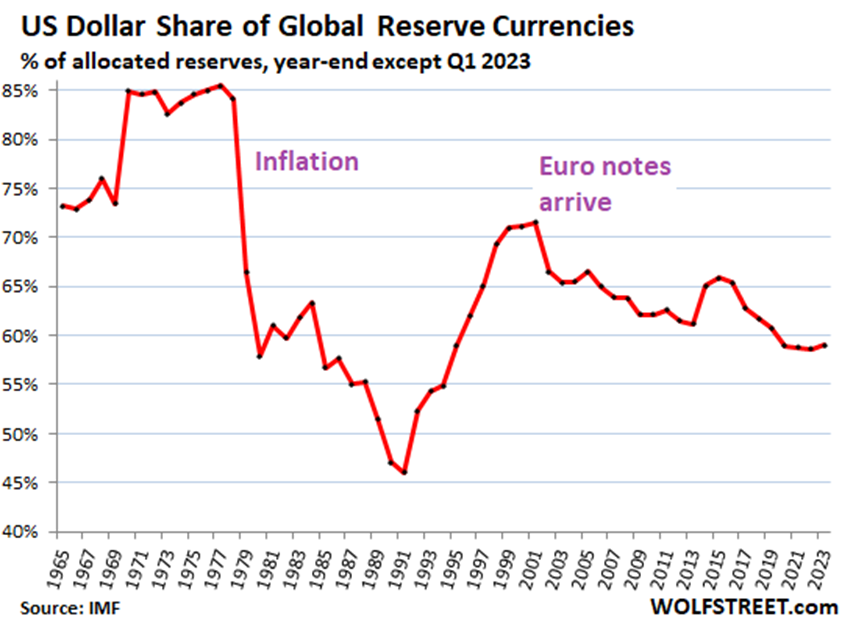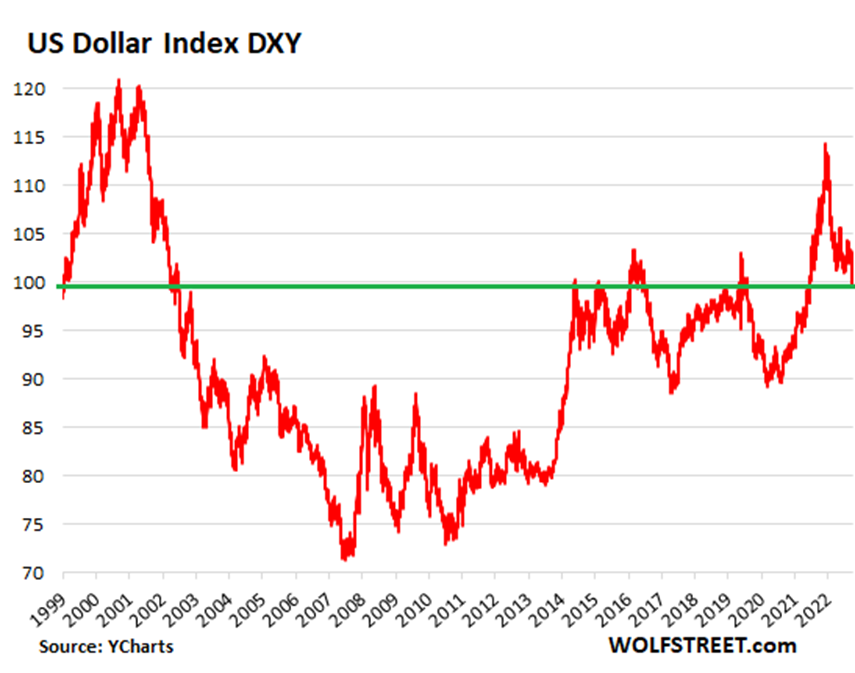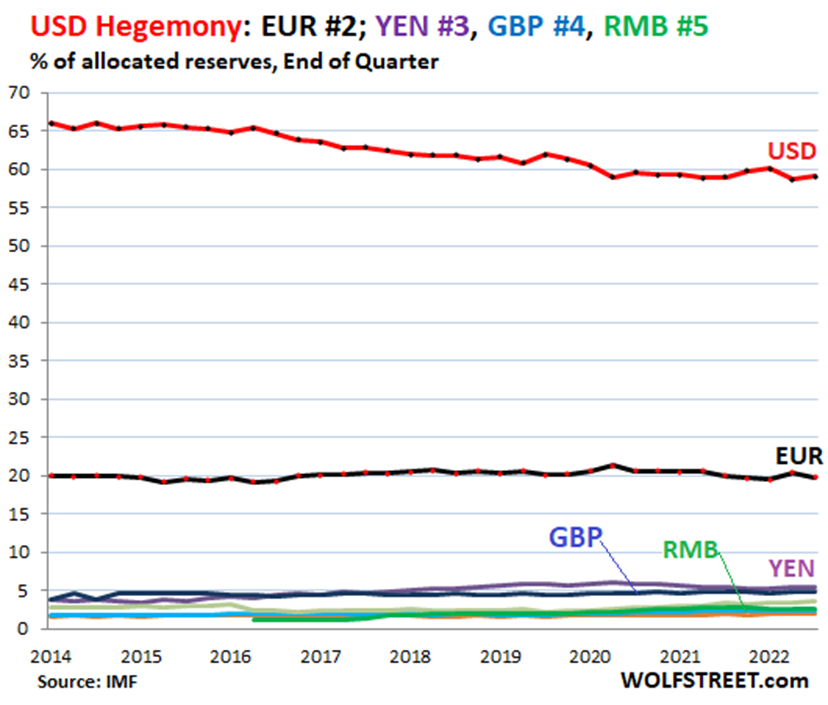 Photo by Diem Nhi Nguyen on Unsplash
Photo by Diem Nhi Nguyen on Unsplash
In my “Deeper Dive” for last week, I covered the big drops in inflation that stirred the US stock market and explored in detail for paid subscribers how much those numbers really mean. The short answer is … “It’s complicated.” While there is some obvious evidence from the headlines and even deep under the surface that inflation will continue to fall, there are also some major forces and major calculation changes that most are not aware of that will start applying serious pressure to the upside right away and even more so in the fall.
Articles that made the headlines today underscore a lot of what I wrote in that “Deeper Dive.” As some of today’s news stories (available for free to all today) show, there is plenty of reason to believe the Fed’s inflation fight is far from over. The same can be said for its impact on the dollar, which rose in value when the Fed was increasing its interest hikes and then started falling in value as the Fed started backing down its rate hikes. That is almost as inevitable as math. Whenever a central bank raises interest on bonds issued in its own currency, it has the effect of strengthening the value of that currency.
As the Fed has been backing away from tall hikes, much noise has arisen about the dollar collapsing and being replaced by the Chinese yuan or a new BRICs currency. The truth is that … “It’s complicated.” Yes, the dollar has fallen, but everyone should have expected it to fall just because the Fed is backing slowly away from tightening.
There is little meaning other than that to its fall: As one of the stories in today’s headlines points out, the dollar has fallen to the very high side of its normal trading range. Presumably, its longterm trading range is exactly where the Fed would like the dollar to land because, if it goes up too high in value, it causes huge problems for other nations financed in dollars as they exchange their currencies to pay debt in dollars. That adds pressure to the dollar’s decline as a global currency. Other nations, unless they already despise the dollar, want to see a stable dollar, not one that jacks up their debt-service costs. So, stability back in a lower range relative to other currencies increases trust in the dollar by other nations.
A soaring dollar also harms US trade. So, getting back to normal, as some of the stories today show, is good for the US economy and good for the US dollar as a global trade currency.
The dollar, while it has slowly fallen in usage, still accounts for almost 60% of foreign currency held by banks outside the US, so more than all other currencies combined. It has been falling in usage along a two-decade downtrend, though, so it cannot rest on its laurels and assume it will always be king. However, just as with the Fed’s inflation war, the war for dominance in global currencies is far from decided for the dollar. In fact, after a long slow run downhill as the preferred currency in central-bank holdings, the dollar over the course of this year has actually gone up in status:

In fact, for the last four years, the dollar appears to have put in a bottom to the two-decade decline of its share in global currency reserve holdings. Wolf Richter, in one of his two articles in boldface among the headlines below, also shows how the dollar has merely fallen to the top of its long-term normal trading range in value compared to other currencies:

The news is not so good for China: The Chinese yuan (renminbi) only accounts for about 2% of all foreign currency held by banks outside the US. In fact, it looks like a slug, leaving a slime trail along the ground compared to other major global currencies:

It’s a bottom feeder, and with all the terrible news in today’s headlines for China’s economy, it is not likely to rise anytime soon, and that is likely to add dead weight to trust in any currency China heads up with the BRICS nations, in spite of claims out of Russia this weekend that the new currency will be gold backed. I’m not saying gold backing will not improve trust if it really turns out to be backed by gold and not merely pegged to gold and other commodities (meaning you can exchange it for actual gold). However, any new currency has a lot of trust-building it needs to accomplish, and making that climb under the predominant leadership of a nation with a collapsing economy is not likely to assure trust for many.
Here is a quick dip (as opposed to a “Deeper Dive”) into China’s economic news from today alone:
- China’s youth unemployment is not only at 20%, as reported a few days back in The Daily Doom; it is expected to rise as college graduates try to join the work force in a Covid-lockdown decimated economy. Employment that high can cause civil unrest or, at least, disquiet.
- Two of China’s largest real-estate developers stand on a precipice as they face imminent default on major bonds.
- Yet, Chinese real-estate was just reported to have taken another major drop in sales and in prices in June. That is in spite of Beijing’s attempts to prop the market over the last few months.
- China is adding additional props to its falling real-estate and collapsing developers by placing more burdens on its banks to help them with lower-interest refis.
None of that is going to give a new currency that deeply involves China and its yuan/renminbi an easy path to broad global trust. In fact, it is highly probable the nation’s economy declines even more before it finds a muddy bottom. Russia’s constant trickle of losses in Ukraine isn’t going to help assure a sense of stability in a new BRICS currency either. So, the further decimation of the dollar is far from assured as it now appears to have bottomed in its decline.
The “Deeper Dive” I’ve started working on for subscribers this week will lay out the major moves happening in Central Bank Digital Currencies (CBDCs), revealing how global and intrusive the planned changes have become for the new digital currencies of all nations. No longer is a cashless society kept to being back-room talk in richly paneled, club rooms, scented with Cuban cigar smoke. It’s all brazenly in the open now as the CBDC introductions roll out.
Good news for The Daily Doom and any who appreciate it: It isn’t doomed any longer. Subscriber support at the end of last week climbed above the bottom limit I had set for whether to continue past July … with a small margin of room to spare. So, The Daily Doom will continue! Thank you, especially to my Patrons from The Great Recession Blog, many of whom moved their support over to The Daily Doom, some of whom even added to their support. Last week’s one-time “Save the Doom” sale also brought in some new subscribers, and others have been slowly joining since The Daily Doom went to paid subscriptions back in March. So, thank you to all who have kept The Doom coming.


